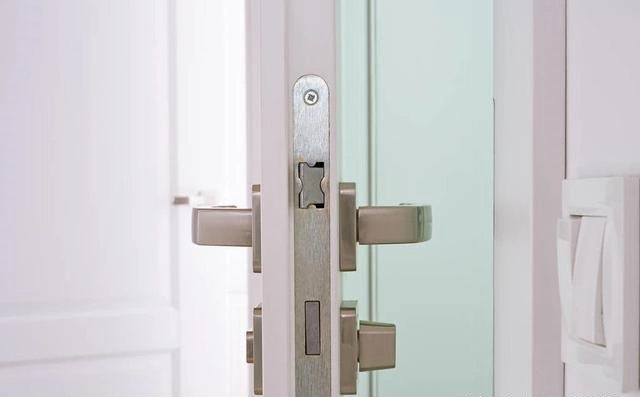On this page
Should single tongue Lock or double tongue lock be used in door? This news is going to talk about it and the difference between them.
Home decoration must be comprehensive from the purchase of furniture to a door lock selection. All needs the owner done by themselves in person. Let’s see the difference between single tongue lock and double tongue lock as well as the relevant requirements of indoor door purchase.
Home decoration must be comprehensive from the purchase of furniture to a door lock selection. All needs the owner done by themselves in person. Let’s see the difference between single tongue lock and double tongue lock as well as the relevant requirements of indoor door purchase.
The Difference Between Single Tongue Lock and Double Tongue Lock
1. Single Tongue Lock
It can be opened by internal handle (or knob). It has a powerful external secret door that is easy to use and does not require a key. It is especially suitable for fire prevention and other emergencies. But the drawback is that as long as someone is inside (including the thief), the door can be opened at any time.
2. Double Tongue Lock
The door is opened with a key, and its confidentiality is higher than that of a single tongue lock. It cannot be opened without a key. Moreover, as long as there is no key to retract, most locking tongs also have defense function.Ordinary tools such as screwdrivers, pliers or hammers can not remove the lock. Unfortunately, in an emergency (more difficult to escape in the event of a fire), it is difficult to open the door. As the lock tongue moves in the vertical direction, the lock tongue of the double button (tiger) lock is usually cylindrical. And the lock tongue extends or retracts through the key or knob (or handle), so that the latch structure has the function of self magnetism and non self magnetism.

Disadvantages of Single Tongue Lock
1. Material Difference
Common manufacturers produce single tongue lock to save costs, and use cheap aluminum as the lock body material. Aluminum material is soft and easy to corrode, which greatly reduces the service life of the lock body.
2. Low Safety Factor
From the point of view of safety, the safety factor of single tongue lock is very low and not firm even the damper can be opened by pushing.
3. No Function of Prevention of Thievery
There is no anti-theft function for single tongue lock. In terms of anti-theft function, single tongue lock owns less or even no anti-theft function.
4. High Opening Rate
Generally, there are only four single latch locks with lock cylinder, so the single lock lockset has a high mutual opening rate, which is generally as high as 50%. It is one of the main reasons for eliminating tongue lock in single market.
Single Tongue Lock or Double Tongue Lock Should be Used in Room Door?
This does not need to be tangled. The interior door lock emphasizes the decorative function and part of the anti-theft performance. The single tongue and double tongue only change the structure of the lock. There is no concept of elimination. And it is also easy to be found on Taobao. You can use the key words to search on Taobao: handle the door lock, single tongue, etc. Just now, I have looked up a lot of them, but the single tongue lock is generally divided into two types: handle lock (small lock body, evolved from ball type lock, with small opening, and the majority of keys are on the handle). The other is pure single tongue plug-in door lock (the lock body is relatively large, it is a plug-in lock, the key is still below, and an additional hole is opened on the room door). It depends on your needs.
The above is about the difference between single tongue lock and double tongue lock, and the content of room door with single tongue or double tongue. We hope it could help you. The difference between single tongue lock and double tongue lock is only in the proposed structure, and the difference between them is not very big. Relatively speaking, the safety of double tongue lock is higher than that of single tongue lock. But when choosing the indoor door with low safety performance, the single tongue lock is more suitable.

